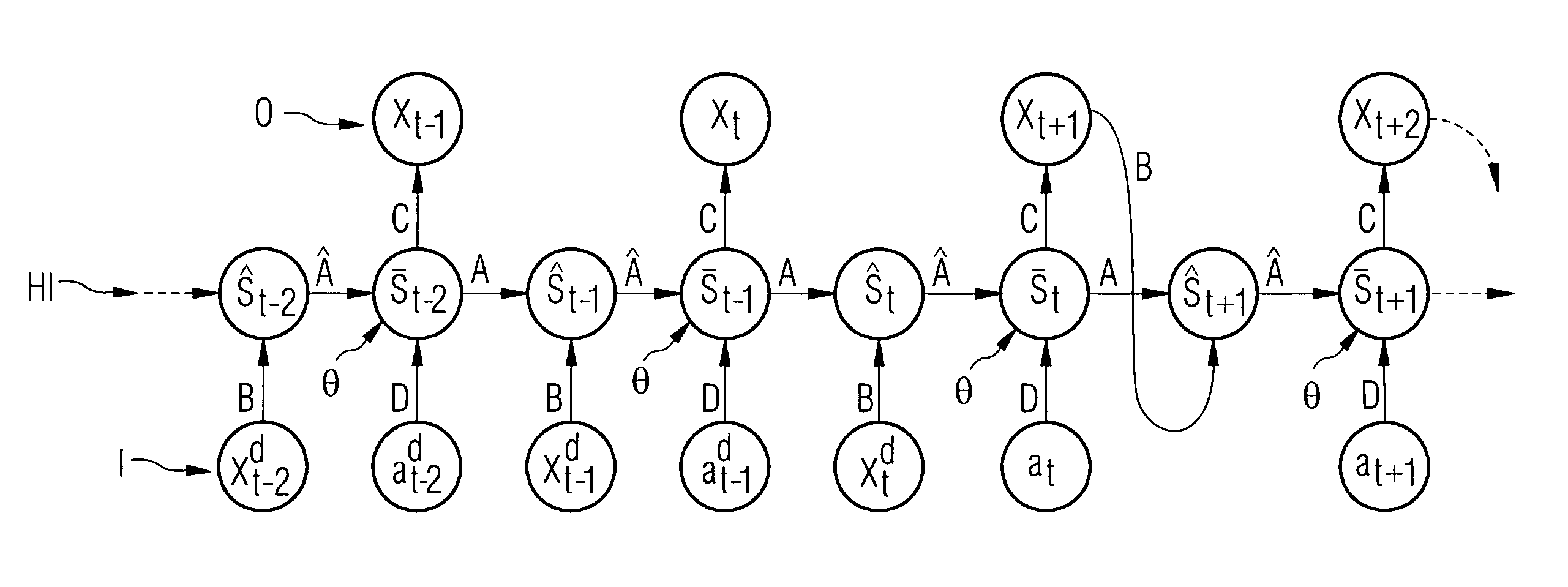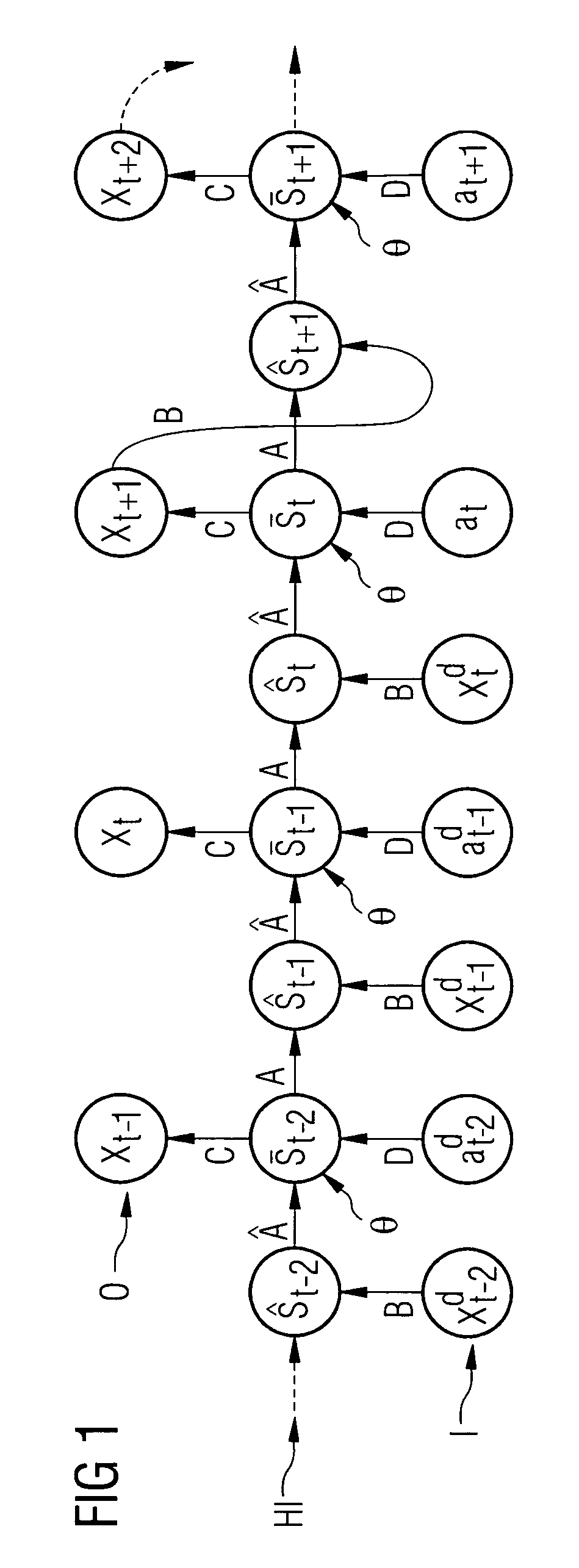Method for computer-aided control or regulation of a technical system
a technology of computer-aided control and technical systems, applied in adaptive control, instruments, biological models, etc., can solve the problems of insufficient supply, inability to apply known methods generally to any technical system, and inability to predict dynamic behavior. the effect of minimizing the quadratic error between the predicted and actual sta
- Summary
- Abstract
- Description
- Claims
- Application Information
AI Technical Summary
Benefits of technology
Problems solved by technology
Method used
Image
Examples
Embodiment Construction
[0052]The inventive method is described in detail below. The method can be applied here to any type of technical system, whose dynamic behavior can be described by a state space X and an action space A with a (stochastic) transition function P(xt, at, xt+1). Here xt, xt+1 ∈ X are states of the technical system at the time points t and t+1, with each state being characterized by a number of state and / or ambient variables. These ambient variables here are measurable state variables of the technical system, for example gas pressure, gas temperature, combustion chamber acceleration and the like in a gas turbine. The actions at ∈ A here are changes in manipulated variables of the technical system at the time point t, which in turn influence subsequent states of the technical system. As with the state xt the action at can also comprise a number of action variables and an action can thus be characterized by the change in a number of manipulated variables. One example of a manipulated varia...
PUM
 Login to View More
Login to View More Abstract
Description
Claims
Application Information
 Login to View More
Login to View More - R&D
- Intellectual Property
- Life Sciences
- Materials
- Tech Scout
- Unparalleled Data Quality
- Higher Quality Content
- 60% Fewer Hallucinations
Browse by: Latest US Patents, China's latest patents, Technical Efficacy Thesaurus, Application Domain, Technology Topic, Popular Technical Reports.
© 2025 PatSnap. All rights reserved.Legal|Privacy policy|Modern Slavery Act Transparency Statement|Sitemap|About US| Contact US: help@patsnap.com



